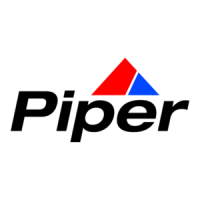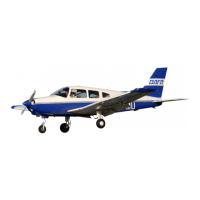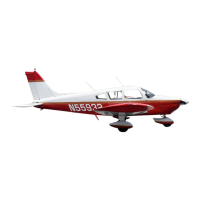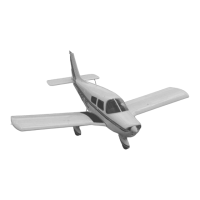PIPER
AIRCRAFT CORPORATION
PA·lS-161,
WARRIOR
II
SECTION 4
NORMAL
PROCEDURES
4.31
APPROACH
AND LANDING (See charts in Section
S)
Check to insure the fuel selector
is
on the proper (fullest) tank and that
the seat backs are erect. The seat belts and shoulder harnesses should
be
fastened and the inertia reel checked.
Turn the electric fuel pump
ON and turn the air conditioner OFF. The
mixture should
be
set in the full RICH position.
The airplane should
be
trimmed to
an
initial-approach speed
of
about
70
KIAS with a final-approach speed
of
63
KIAS with flaps extended to
40°. The flaps can
be
lowered
at
speeds up to
103
KIAS, if desired.
The mixture control should
be
kept
in
full RICH position to insure
maximum acceleration if it should be necessary to open the throttle again.
Carburetor heat should not
be
applied unless there
is
an indication of
carburetor icing, since the use
of
carburetor heat causes a reduction
in
power which may be critical in case
of
a go-around. Full throttle operation
with carburetor heat on can cause detonation.
The amount
of
flap used during landings and the speed
of
the·aircraft
at
contact with the runway should be varied according to the landing surface
and conditions of wind and airplane loading. It
is
generally good practice to
contact the ground
at
the minimum possible safe speed consistent with
existing conditions.
Normally, the best technique for short and slow landings
is
to use full
flap and enough power to maintain the desired airspeed and approach flight
path. Mixture should
be full RICH, fuel on the fullest tank, and electric fuel
pump
ON. Reduce the speed during the flareout and contact the ground
close to the stalling speed. After ground contact hold the nose wheel off
as
long as possible. As the airplane slows down, gently lower the nose and
apply the brakes. Braking
is
most effective when flaps are raised and back
pressure
is
applied to the control wheel, putting most
of
the aircraft weight
on
the main wheels. In high wind conditions, particularly in strong cross-
winds, it may
be desirable to approach the ground at higher than normal
speeds with partial or no flaps.
ISSUED:
AUGUST 13, 1981
REPORT: VB-1180
4-23
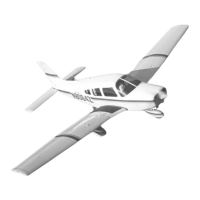
